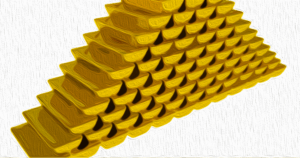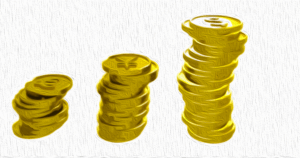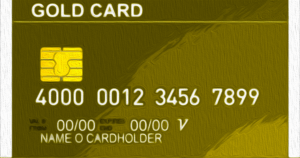
The Announcement by CBOE Digital
The Chicago Board Options Exchange (CBOE), the largest US options exchange, has made a groundbreaking announcement that has sent shockwaves through the Bitcoin community. In 2024, CBOE plans to launch a cryptocurrency-native exchange and clearinghouse specifically designed for Bitcoin futures trading. This new model will offer margin trading, leveraged derivatives, and a range of other products.
Expanding Investment Opportunities
With this new exchange, users will not only have the ability to invest directly in Bitcoin futures contracts, but they will also be able to explore higher-risk methods of increasing their purchasing power. Margin trading, for instance, allows users to use their account assets as collateral for a larger loan from the exchange. This loan can then be invested in futures trades. Additionally, leveraged trading offers users a line of credit to magnify their position, allowing them to take gains and losses at multiples of their initial investment. CBOE plans to offer both of these functions.
Unique and Groundbreaking Offerings
CBOE claims to present "an intermediary-inclusive model" that ensures separation of duties to avoid conflicts of interest. Acting as both an exchange and clearinghouse, CBOE aims to bring more unique and groundbreaking offerings in 2024. Their roadmap also includes physically delivered products, pending regulatory approval. This model will lower the barrier to entry for ordinary investors looking to gain exposure to Bitcoin. However, it is important to note that these margin and leverage options come with added risks.
A History of Bitcoin Futures Trading
CBOE has a long history with Bitcoin futures trading. In December 2017, it became the first options exchange to offer Bitcoin futures trading, beating its Chicago-based rival CME by 8 days. While this initial project was eventually closed during the bear market in 2019, Bitcoin futures trading has proven to be popular over time. The Chicago Mercantile Exchange (CME), which launched the second-ever futures trading program, has experienced significant success in this space. In fact, the CME now sees higher rates of Bitcoin futures trading than even Binance, the world's largest cryptocurrency exchange.
Reviving Bitcoin Futures Trading
Based on the growing interest and success of Bitcoin futures trading, CBOE has decided to revive its efforts with new and expanded functionality. The exchange obtained regulatory approval from the Commodities and Futures Trading Commission (CFTC) in June and has since partnered with industry leaders to ensure a smooth launch. These partners include B2C2, BlockFills, CQG, Cumberland DRW, Jump Trading Group, Marex, StoneX Financial, Talos, tastytrade, Trading Technologies, and Wedbush.
The Launch and Future Expansion
The new regime of futures trading at CBOE is scheduled to open on January 11, 2024. Depending on its success and regulatory developments, additional features may be added in the following months. While CBOE has also announced plans to offer Ether futures alongside Bitcoin futures, there are currently no plans to include other altcoins. The Bitcoin community eagerly awaits the performance of these futures trades in January. Despite the potential for increased losses, the lower entry barrier and increased accessibility are expected to attract a wide range of traders.
The Impact of Bitcoin Futures Trading
Bitcoin futures trading has already become a substantial industry, and CBOE believes that introducing riskier options will further fuel interest in this space. The marriage of Bitcoin and finance has contributed significantly to the popularity and value of Bitcoin. If CBOE can once again set a trend in the industry with its Bitcoin futures trading model, it will open up a world of opportunities for traders of all sizes.
Frequently Asked Questions
How do I open a Precious Metal IRA
The first step in opening an Individual Retirement Account, (IRA), is to decide if it's something you want. To open the account, complete Form 8606. Then you must fill out Form 5204 to determine what type of IRA you are eligible for. This form should not be completed more than 60 days after the account is opened. Once this has been completed, you can begin investing. You can also choose to pay your salary directly by making a payroll deduction.
For a Roth IRA you will need to complete Form 8903. The process for an ordinary IRA will not be affected.
To qualify for a precious-metals IRA, you'll need to meet some requirements. The IRS says you must be 18 years old and have earned income. You can't earn more than $110,000 per annum ($220,000 in married filing jointly) for any given tax year. You must also contribute regularly. These rules apply whether you're contributing through an employer or directly from your paychecks.
You can use a precious metals IRA to invest in gold, silver, palladium, platinum, rhodium, or even platinum. However, physical bullion will not be available for purchase. This means you can't trade shares of stock and bonds.
You can also use your precious metallics IRA to invest in companies that deal with precious metals. This option is available from some IRA providers.
An IRA is a great way to invest in precious metals. However, there are two important drawbacks. They aren't as liquid as bonds or stocks. This makes them harder to sell when needed. Second, they are not able to generate dividends as stocks and bonds. You'll lose your money over time, rather than making it.
What is the best precious metal to invest in?
The answer to this question depends on how much risk you are willing to take and what type of return you want. Although gold has been considered a safe investment, it is not always the most lucrative. If you are looking for quick profits, gold might not be the right investment. If patience and time are your priorities, silver is the best investment.
If you don’t desire to become rich quickly, gold may be your best option. However, silver might be a better option if you're looking for an investment that provides steady returns over long periods.
Can I keep a Gold ETF in a Roth IRA
Although a 401k plan might not provide this option, you should still consider other options like an Individual Retirement Account (IRA).
An IRA traditional allows both employees and employers to contribute. Another way to invest in publicly traded companies is through an Employee Stock Ownership Plan.
An ESOP can provide tax advantages, as employees are allowed to share in company stock and the profits generated by the business. The money invested in the ESOP is then taxed at lower rates than if it were held directly in the hands of the employee.
You can also get an Individual Retirement Annuity, or IRA. You can make regular payments to your IRA throughout your life, and you will also receive income when you retire. Contributions to IRAs do not have to be taxable
What Should Your IRA Include in Precious Metals?
It's important to understand that precious metals aren't only for wealthy people. You don't have to be rich to invest in them. In fact, there are many ways to make money from gold and silver investments without spending much money.
You might consider purchasing physical coins, such as bullion bars and rounds. It is possible to also purchase shares in companies that make precious metals. Or, you might want to take advantage of an IRA rollover program offered by your retirement plan provider.
You will still reap the benefits of owning precious metals, regardless of which option you choose. They are not stocks but offer long-term growth.
And unlike traditional investments, they tend to increase in value over time. If you decide to make a sale of your investment in the future, you will likely realize more profit than with traditional investments.
What are the pros and disadvantages of a gold IRA
An Individual Retirement Account (IRA), unlike regular savings accounts, doesn't require you to pay tax on interest earned. An IRA is a great option for those who want to save money, but don't want tax on any interest earned. However, there are also disadvantages to this type of investment.
You could lose all of your accumulated money if you take out too much from your IRA. You may also be prohibited by the IRS from making withdrawals from an IRA after you turn 59 1/2. You will likely have to pay a penalty fee if you withdraw funds from an IRA.
Another problem is the cost of managing your IRA. Many banks charge between 0.5%-2.0% per year. Other providers may charge monthly management fees, ranging between $10 and $50.
Insurance will be required if you would like to keep your cash out of banks. Many insurers require that you own at least one ounce of gold before you can make a claim. You may be required by some insurers to purchase insurance that covers losses as high as $500,000.
You will need to decide how much gold you wish to use if you opt for a gold IRA. You may be limited in the amount of gold you can have by some providers. Some providers allow you to choose your weight.
It is also up to you to decide whether you want to purchase physical gold or futures. Physical gold is more costly than gold futures. Futures contracts allow you to buy gold with more flexibility. You can set up futures contracts with a fixed expiration date.
You also need to decide the type and level of insurance coverage you want. Standard policies don't cover theft protection, loss due to fire, flood or earthquake. However, it does cover damage caused by natural disasters. If you live near a high-risk region, you might want to consider additional coverage.
You should also consider the cost of storage for your gold. Insurance doesn't cover storage costs. Safekeeping costs can be as high as $25-40 per month at most banks.
To open a IRA in gold, you will need to first speak with a qualified custodian. A custodian keeps track of your investments and ensures that you comply with federal regulations. Custodians aren't allowed to sell your assets. Instead, they must retain them for as long and as you require.
After you've determined which type of IRA is best for you, fill out the paperwork indicating your goals. You must include information about what investments you would like to make (e.g. stocks, bonds and mutual funds). Also, you should specify how much each month you plan to invest.
You will need to fill out the forms and send them to your chosen provider together with a check for small deposits. Once the company has received your application, they will review it and send you a confirmation email.
A financial planner is a good idea when opening a gold IRA. A financial planner can help you decide the type of IRA that is right for your needs. They can help reduce your expenses by helping you find cheaper alternatives to buying insurance.
What's the advantage of a Gold IRA?
Many benefits come with a gold IRA. It can be used to diversify portfolios and is an investment vehicle. You decide how much money is put in each account and when it is withdrawn.
You also have the option to roll over funds from other retirement accounts into a gold IRA. This is a great way to make a smooth transition if you want to retire earlier.
The best thing about investing in gold IRAs is that you don’t need any special skills. These IRAs are available at all banks and brokerage houses. Withdrawals can happen automatically, without any fees or penalties.
That said, there are drawbacks too. Gold is historically volatile. Understanding why you want to invest in gold is essential. Are you seeking safety or growth? Is it for insurance purposes or a long-term strategy? Only then will you be able make informed decisions.
If you plan on keeping your gold IRA alive for a while, you may want to consider purchasing more than 1 ounce of pure gold. A single ounce isn't enough to cover all of your needs. You could need several ounces depending on what you plan to do with your gold.
You don't have to buy a lot of gold if your goal is to sell it. You can even manage with one ounce. You won't be capable of buying anything else with these funds.
Statistics
- If you take distributions before hitting 59.5, you'll owe a 10% penalty on the amount withdrawn. (lendedu.com)
- This is a 15% margin that has shown no stable direction of growth but fluctuates seemingly at random. (smartasset.com)
- Gold is considered a collectible, and profits from a sale are taxed at a maximum rate of 28 percent. (aarp.org)
- Indeed, several financial advisers interviewed for this article suggest you invest 5 to 15 percent of your portfolio in gold, just in case. (aarp.org)
- (Basically, if your GDP grows by 2%, you need miners to dig 2% more gold out of the ground every year to keep prices steady.) (smartasset.com)
External Links
forbes.com
- Gold IRA, Add Sparkle to Your Retirement Nest egg
- Understanding China's Evergrande Crisis – Forbes Advisor
law.cornell.edu
- 7 U.S. Code SS7 – Designation boards of trade as contract market authorities
- 26 U.S. Code SS 408 – Individual retirement plans













